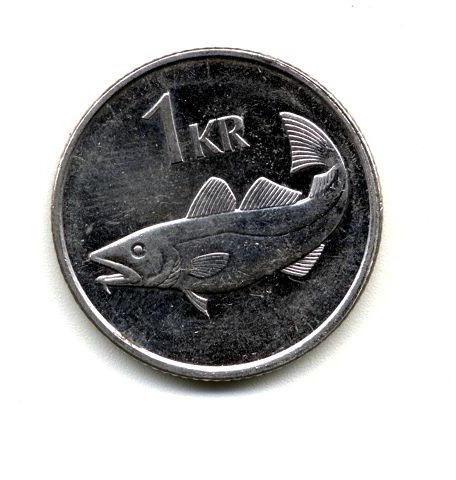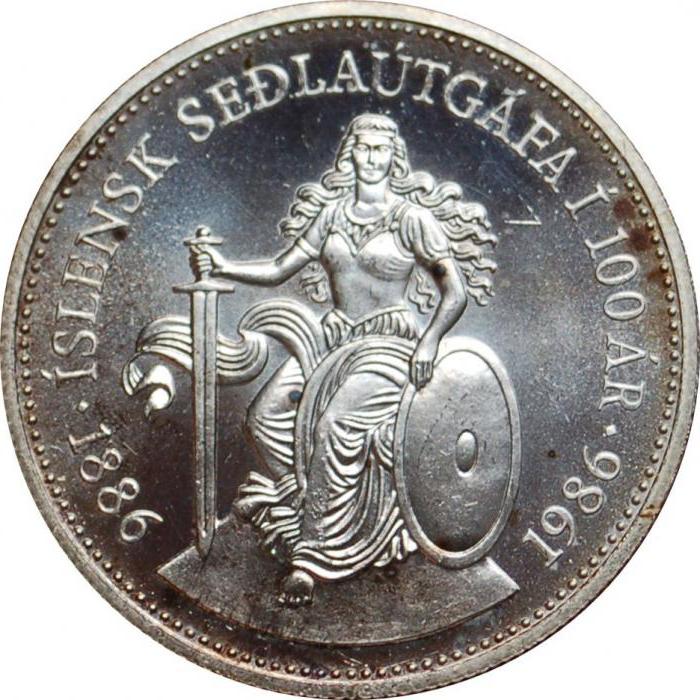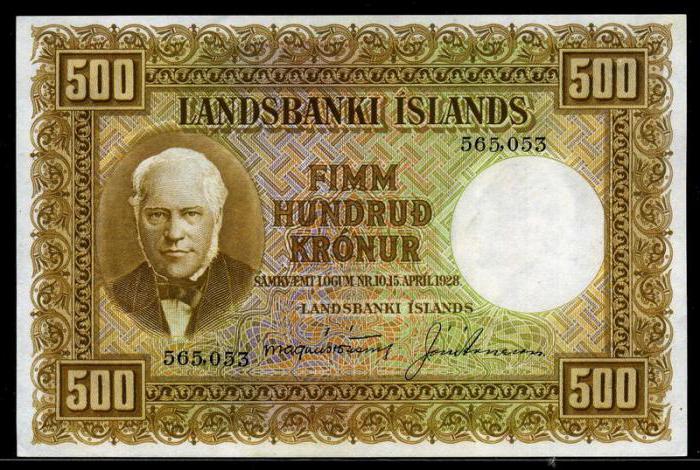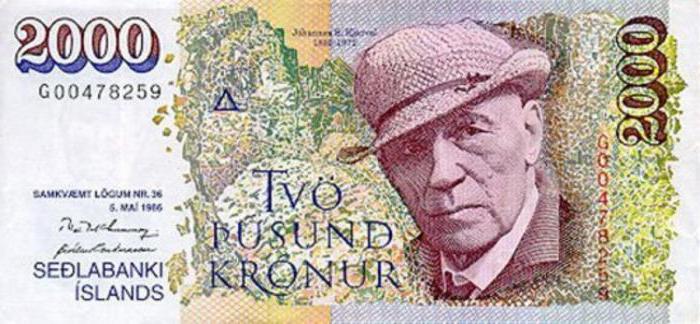The official currency of Iceland is the Icelandic krona (ISK). This monetary unit, until recently, was divided into 100 air.
Short story
The Icelandic krona was officially put into circulation in 1885. Until 2003, 1 kroon was equal to 100 air, but this was subsequently abandoned, considering that there was no need for small change coins. The refusal of coins took place gradually, at first the calculation of all monetary transactions began to be rounded up to 50 air, then a law was passed on the complete rejection of exchange money. The government of the country considered that the population of the island state does not need small money used for exchange, therefore they were disposed of to simplify the money circulation.
The national currency is a symbol of the sovereignty of the republic, and therefore Icelanders are very careful and respectful of their currency. Since Iceland refused to enter the European Union, the state did not switch to a single European currency.
Banknotes
Icelandic krona can be either in the form of paper notes or in the form of metal coins. Banknotes began to print back in September 1885. Initially, they consisted of banknotes in denominations of five, ten and fifty crowns. Until 1927, various banking institutions were engaged in printing money in Iceland, and starting from that year, the National Bank of Iceland became the exclusive holder of the printing of money. 
Since 1961, the right to issue paper banknotes passed to the Central Bank of Iceland. In 1981, the denomination of monetary units in the country was made, new banknotes in denominations of ten, fifty, one hundred and five hundred kroons were issued. Three years later, in 1984 a new banknote of 1000 kroons appeared. Then, denominations of greater denomination began to appear. Today there are banknotes of 2, 5 and 10 thousand crowns.
Coins
For a long time, Iceland did without coins, using only paper money. Minting began only in 1925, after almost half a century since the introduction of the crown.
After the proclamation of a republic, the country faced the problem of replacing coins with royal symbols with republican symbols. They began to issue money according to a new model since 1947. In 1981, due to the currency denomination, the coins again acquired a new look. Starting this year, exchange eire began to be made of an alloy of copper and nickel, and the coins in crowns were made of brass.
In different historical periods, coins of Iceland were minted by different mints. Among them were the Royal Mint in Denmark, in the UK and a private mint in Birmingham.
Icelandic krona course
The Icelandic economy, although quite stable and well developed, does not play a big role in the world market, since the country is far from the main economic centers and too weakly populated. In this regard, the national currency of the country does not have much weight in the foreign exchange market. 
The Icelandic krona is very cheap compared to the major world currencies (US dollar and Euro). By the way, the currency does not pretend to be the world. For one euro, today they give about 116 ISK, which indicates a rather low cost of the currency. The Icelandic krona to the euro is estimated at about 0.01. These indicators are relative and may vary depending on the exchange office. In addition, the situation in the foreign exchange market is very variable, and exchange rates are constantly floating.
If we compare ISK with USD, then the Icelandic krona to the US dollar will be estimated approximately in the same way as to the euro, about 0.01. However, if you exchange currencies in places, then for one dollar they will give about 105-106 kroons of Iceland.This happens because when exchanging the kroner for a dollar or euro, its face value is too small and rounded to the nearest hundredth. On the whole, the system is imperfect, but they are not used as often, because few foreigners exchange currencies for Icelandic kroner.
One Icelandic krone to the ruble costs approximately 0.55. Consequently, for one ruble they will give about 1.8 kroons.
Exchange operations
Due to the low demand for this currency, its exchange outside Iceland itself can be quite problematic. It’s rare where you can find a bank or exchange office that works with this currency. In many countries, there are no such items at all. An exchange operation is possible only in Iceland itself, the Scandinavian countries and some other places. 
However, in the Iceland Republic there are no problems with currency exchange. In almost all (even small) settlements, you can find a bank or an exchange office where you will be happy to make an exchange for dollars, euros, pounds and some other currency units.
The exchange of Russian rubles for Icelandic crowns can be very difficult even on the territory of Iceland itself. However, this is no longer due to the fact that few companies work with our national currency, but to the low prevalence and low interest of exchange offices in the Russian currency. It turns out that exchanging rubles for crowns or crowns for rubles is very problematic both in Russia and in Iceland. Therefore, before setting off on a trip to this country, it is best to exchange rubles for dollars or euros in advance, and then you will have no problems.
Conclusion
Before going on a trip to any country, you need to find out as much as possible about its culture, laws and money at the planning stage of your visit to it. This is especially important when you decide to visit such a rather specific country as Iceland, about which not much is known in Russia.
This country has a rather peculiar financial system, and their national currency, the Icelandic krona, is not in high demand in Russia, and in the rest of the world, too, so all exchange transactions are rather complicated. To eliminate the possibility of problems with the exchange of money, it is best to pre-purchase in rubles the money that can be easily exchanged at the airport, bank or exchange office of the Icelandic Republic.
It is best to come to the country, taking with you dollars or euros, you can also use the British pound, Canadian dollar or Norwegian krone, which can also be exchanged on the territory of Iceland, if desired. However, not all exchange companies work with them, therefore, in order to avoid all kinds of difficulties, it is better not to use them either.